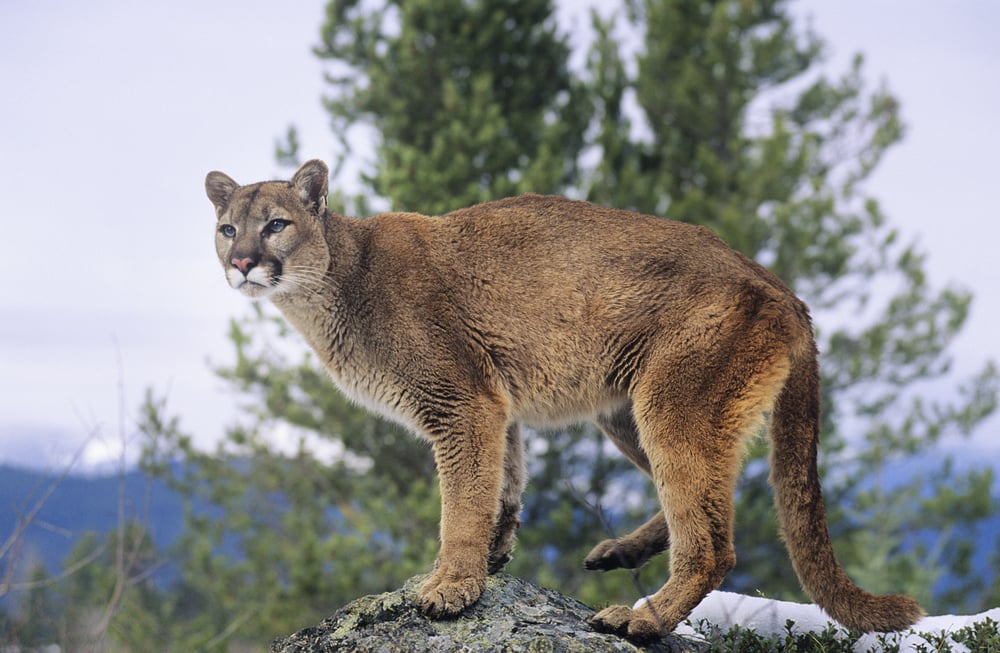In 2014, carnivore biologist Mark Elbroch reported the return of the Lava Mountain Wolf Pack, the largest pack of its kind in the western region of the United states into Wyoming’s Teton Range. The results were troubling for the mountain lions who resided at the base of the cliff.
F47 and her kittens were part of a group of mountain lions being studied under Elbroch’s research. Over the span of a three month period, F47 lost a kitten a month to the opposing predators. But F47 and her kittens were not the only cats to lose their numbers to the pack. Three other kittens were lost during that time. Their deaths, a blunt and ravaged memory for Elbroch, “It was hard for us to watch,” he says. Although he admits that he didn’t see the death take place, the footage left behind of tattered flesh and bones left little to the imagination for the director of Panthera’s Puma Program. But this wasn’t the first time researchers had studied the two predators in their shared habitat.
In the mid 1900’s researchers had the age old question, “who wins” the big cat or the wild dog. Well, the answer isn’t as simple as that. but ultimately, studies show that when wolves and mountain lions compete for food, wolves end up with the winnings, but by stealing them or changing the hunting terrain of the mountain lions. This level of hardball often led to reduced numbers in mountain lions whenever wolves were introduced into their shared territory.
However, wildlife biologists were still unsure of how detrimental wolves could be to mountain lion populations, it was clear that they impacted the survival numbers but not how deeply. A recent study published in the journal proceedings of the Royal Society offered that wolves had an even greater impact on dwindling numbers among mountain lions than human hunters. This revealed that the impact was even more dire than previously assumed. But how is it that wolves are able to greatly decrease the numbers? By starving the adults and feeding on the kittens.
This two part unintended approach is the secret behind the slaughter level of competition between both predators. In an earlier study Elbroch and his team made a discovery, over a fifteen year span, the mountain lion population in the Greater Yellowstone Ecosystem in Wyoming dropped by 48 percent. They attributed the declining numbers to three factors; human hunting cats, less prey and presence of wolves. Curious to determine what wiped nearly half a population of mountain lions out, Elbroch and his team analyzed the data they gained from 147 mountain lions in their study. Using telemetry or GPS collars Elbroch and his team tracked the whereabouts of the mountain lions. Not only did the data provide knowledge on migration patterns, it also meant that the researchers were able to track down the bodies of dead mountain lions and from that, deduce what led to their death. The data was then compared against data from wolves and elk within the same region. Based on the data researchers discovered that the prime drivers of the declining mountain lion population were wolves. specifically, their presence.
Researchers discovered the presence of wolves caused the primary prey, elk to huddle up to fight against invading wolves. The elk began to move in herds when meeting to eat to avoid being attacked and lean on the strength of numbers. This is detrimental for the mountain lion who primarily hunts stealthy.
“Wolves are now in Washington, Oregon, California, Idaho, Wyoming, Montana and moving outward still,” says Elbroch. “And these are all states that have aggressive mountain lion management. It will be fascinating to see how they decide to alter their management of mountain lions as wolves move into the system.” The alarming results of similar studies has been referenced when detailing the dwindling numbers of mountain lions. As wolves are being reintroduced to the wild to recolonize their territory the mountain lions who live there will be forced to contend with them and the humans who hunt.





